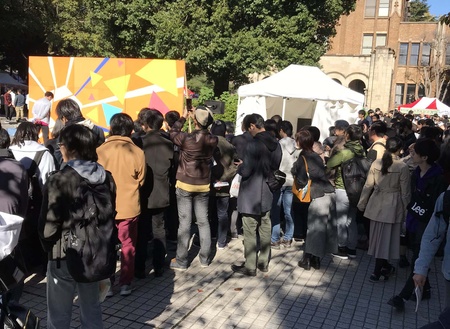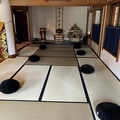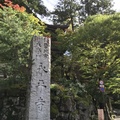The University of Tokyo was the second school where I taught as a visiting lecturer. Known as “Todai” (short for Tokyo Daigaku), it is widely regarded as the nation’s top university—the Harvard of Japan. You might think that the country’s best and brightest students would be eager to challenge themselves by taking a course in English offered by a foreigner like me. In fact, they avoided my classes, save for a few who had grown up overseas and were fluent in English.
As a result, nearly all of my students were foreigners— those studying abroad from universities in the US, Canada, UK, Singapore, Australia, New Zealand, and various European countries; and others matriculating through Todai’s relatively new major in Japanese Studies that was taught entirely in English. In the end, I couldn’t tell who in my classes were exchange students, regular Todai students, or English-medium Todai students.
The composition of my class was the byproduct of a wave of globalization sweeping through Japanese higher education. My friend Yujin was part of this wave as a founder and administrator of Todai’s English-medium degree program. Indeed, he had recruited many of my students from all over the world.
Having received his undergraduate and graduate degrees in the US and being a scholar of American Studies, Yujin was part of efforts to increase international student exchanges going both ways across the Pacific, hire and promote more foreign faculty, and—more difficult—encourage Todai professors to teach at least one of their classes in English.
An even greater challenge for Todai’s globalization was to change the start of the school year to the Fall so that it better aligned with the schedule of leading universities throughout the world. Critics complained that beginning school in the Fall rather than the traditional Spring term would prove a logistical nightmare as it would require high schools throughout the nation to follow suit. Moreover, they accused the Todai globalizers of jeopardizing the nation’s cultural integrity. Didn’t nature dictate that the school year begin in Spring with the flowering sakura?
In the end, what seemed like a straight-forward idea to increase international student exchange not only failed to win enough support on campus but placed the matter of globalization at Todai under the spotlight of suspicion directed by right-wing nationalists who feared that liberal, Western-trained intellectuals were selling out Japanese civilization.
As a visiting lecturer from the US, I appreciated Todai’s globalization efforts as being in sync with similar multicultural, bi-lingual, and transnational reforms at American universities. But when it came to gender equity, despite advocacy by Yujin and others, Todai was woefully out of step with the West.
The school’s sex ratio lagged far behind those at peer universities around the world: women comprised only twenty percent of Todai undergraduates, fewer graduate students, and still fewer faculty members. By comparison, the numbers for Harvard (or any Western university, really) were much more balanced with women making up half the student body of undergraduates, graduate, and professional students; and nearly forty percent of the faculty.
Why were there so few women at Todai?
Some would say that their comparative dearth was hardly due to gender bias. It was the natural outcome of the school’s super rigorous yet purely meritocratic admissions system that was based on standardized entrance examinations—if you passed, you got into the university. In this sense, it would be wrongheaded to promote gender equity by tossing out the school’s entrance exams through which both men and women (as well as rich and poor) had in theory an equally dismal chance of passing.
Yujin begged to differ with this defense of the status quo. Evoking the debate over affirmative action in the US, he maintained that even if the entrance exam system was unbiased on the surface, meritocratic exams couldn’t compensate for the deeply embedded thoughts and behaviors (structural factors) that gave men a clear advantage over women in winning a prized spot in Todai’s entering class. To make matters worse, even those women who beat the odds and passed the school’s entrance exam still faced demeaning stereotypes that their male classmates did not encounter.
Indeed, while I was teaching at Todai, one of the school’s professors—a well-known feminist—gave a startling address to that year’s entering class. She dared to lecture eighty percent of the students in the room about their male privilege while candidly apprising the first-year women about the stigmas they would surely confront in the job and marriage markets. “Too smart.” “Too independent.” “Not wife material.” The address became front-page news and unleashed a wave of anti-feminist backlash against her. “Those poor Todai first years didn’t deserve to be chastised by that lady professor. On their first day of school, no less!”
The professor’s critique didn’t surprise me given what I had heard from Yujin about his school’s gender bias and inequality, but one student’s response to it did. Mei was quite Americanized, although not a feminist or otherwise politically inclined. She had grown up through middle school age in the US and then made a seamless move back to Japan where she completed high school studying in both Japanese and English. With my encouragement, she had thought about applying to doctoral programs, but decided instead to get a job after graduation.
“Besides,” she said. “I want to get married. I’m already handicapped because I’m at Todai. Getting a doctorate would only make matters worse.”
“What did you think about that controversial address to the first-year class?” I asked.
“I liked it. That professor’s right about the stigma suffered by Todai women. Nobody wants to marry us.”
At that moment a disembodied voice intruded into our conversation. “You can marry another Todai graduate!” The voice was that of the Ph.D. student who managed the room where Mei and I were talking. She had met her husband—indeed, another University of Tokyo graduate—while studying abroad in New York. The office manager emerged from her cubicle to convince Mei that all hope of getting marriage wasn’t lost on her. Mei listened politely but didn’t seem reassured.
It's not fair, I thought, that Mei was handicapped for being smart and dedicated to her schooling. Nor was it right that women in Japan faced structural barriers of a kind that their male counterparts did not. Why couldn’t Todai be like universities in the US that valued a balanced sex ratio over ensuring supposedly meritocratic admissions based on a standardized test?
Even since Japan was forced open to the West in the mid-19th century, foreign observers from missionaries to statesmen to feminists have insisted—not without reason—that raising the status of women was key to Japan’s modernization. Yet intertwined with such notions were persistent stereotypes of Japan as an inherently sexist society woefully trailing the West in terms of gender equality.
Such images were so prevalent and extreme that when one of my Japanese colleagues was a graduate student in Kansas, her classmates refused to believe that an 11th century Japanese women wrote the world’s first novel—Murasaki Shikibu’s The Tale of Genji. “You’re kidding. Impossible. I’ve never heard of her nor any Japanese women writers.”
While I had known about Lady Murasaki’s remarkable achievement and while I quickly distanced myself from my colleague’s Midwestern classmates, I struggled to name another Japanese women writer—or for that matter any female figure in Japanese history. In other words, I too shared stereotyped Western views of Japan. Although I agreed with Yujin that his school might learn from American universities by making their campus more diverse, equitable, and inclusive, my criticism, unlike his, lacked a deep appreciation of Japanese women’s experience and as a result rested upon stereotypes of a backward Japan that needed to catch up to the West. I became aware of this crucial difference between me and Yujin not through reflecting on globalization or gender issues but through a rather random conversation about Todai’s physical plant.
If one expects that the campus of the crown jewel of Japanese higher education to sparkle like the jewel that it is, that expectation would be wrong. Although there were plenty of shiny, high-tech buildings, there were also many utilitarian ones that looked like they came straight out of a Stalinist nightmare. But I’m not talking here about architecture or design so much as the spaces between physical structures. In the US, these would showcase flower beds, grassy knolls, and other types of bucolic landscaping. At Todai, they were filled with all manner of weeds, mud, dirt patches, and stretches of wasteland that held no aesthetic value.
The topic of Todai’s unkempt grounds came up during dinner with a group of Todai colleagues, including Yujin. I teamed up with the other American at the table to deplore the school’s messy campus. “I just wish,” he said, “they would cut the grass.” My colleague was also bothered by his dirty office windows, which he said hadn’t been cleaned in the seven years since he had been teaching at the school. In criticizing Todai’s grounds, he and I managed to expose the true feelings that lay under the veil of Japanese politeness. I had no idea that anyone could defend the ugliness and disorder of the Todai campus. But defend it they did.
“I kind of like the wildness of campus.”
“It symbolizes freedom from convention and ordinary thinking.”
“It reminds of my undergraduate days. Ah. Natsukashi (nice memory).”
During the salute to Todai’s unkempt campus, Yujin, who was usually the first to point out his school’s shortcomings, remained curiously silent. In the end, the chorus of praise turned the dinner conversation around. Now we Americans were on the defensive. “Why were US universities preoccupied with flower beds and manicured lawns?” “Why do you Americans conform to such ordinary aesthetics?” “Why do you waste so much money on a making your campuses pretty when it could be going to more important things like research?” All of a sudden, the Japanese around the table transformed into Einsteins with big brains, unkempt hair, and no time for piddling details like flower beds. We Americans, in turn, became Miss Manners. “Tsk, Tsk. Well really, Professor Einstein! You may be a once-in-a-century genius but your room is a mess!”
Embarrassed and humbled, I learned from this encounter that I shouldn’t judge Todai’s physical grounds based on the aesthetic standards of American universities. I also grasped a more important truth about cross-cultural comparison: As an outsider lacking deep knowledge of Japan, I needed to tread carefully when criticizing Todai’s globalization and gender challenges lest I reinforce dogged stereotypes of Japan’s inferiority to the West. Perhaps in this sense I was no different from the Todai professors who refused to teach in English and opposed changing the school’s academic calendar. If the shoe were on the other foot, there was no way that American professors like me would teach in a foreign language or even think about starting our school year in April. And while I still supported efforts at Todai to counter gender bias and inequality, I no longer assumed that the school’s gender challenges were a sign of Japan’s backwardness vis a vis the West. Difference didn’t necessarily mean inferiority. In the end, my Todai colleagues—Einsteins that I imagined them to be—inadvertently taught me a crucial lesson in cultural relativity.
© 2023 Lon Kurashige









